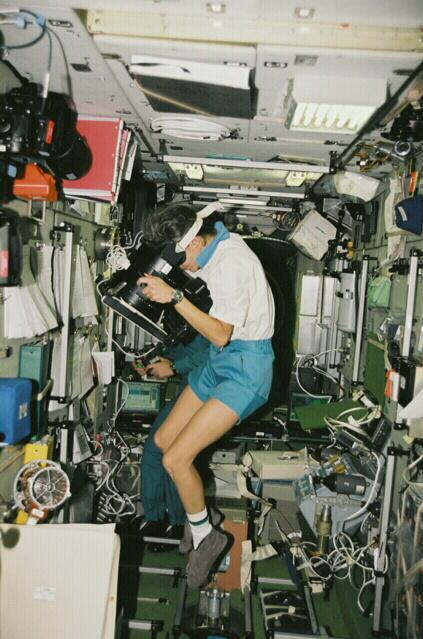The Cogni experiment consists of two parts:
- The 3D Navigation protocol is geared towards understanding how the human brain represents motion, especially the issue as to whether all three dimensions are represented in the same way or whether the horizontal level is treated differently. This part of the experiment will help better understand what spatial references the brain uses to build a mental representation of the path of motion.
- We know that detection of symmetries is speedier if the axis of symmetry is aligned with gravity. The Visual Orientation protocol will examine whether in perceiving visual scenes, the brain gives priority to the gravitational axis.

Operational Requirements and Protocols
Implementing the two experiment protocols involves performing psychophysical tasks. Astronauts look at computer-generated images and then indicate what they have seen. The same observations take place four times: once before the flight, twice on-orbit and once upon return to Earth. This allows for comparison of the errors made on the ground and in flight.
3D Navigation
- For this experiment, the astronaut is immersed in a virtual world on a laptop computer screen. She/he looks at the display through a mask and a circular tube that eliminates any visual indicators. The astronaut moves around through a sequence of tunnels that run through a three-dimensional space. Virtual motion can take place in two ways. In terrestrial mode, the astronauts gaze remains vertical in relation to initial positioning. When a tunnel goes up or down, the astronaut goes through it as s/he would an elevator. In a weightless situation, the astronaut plunges into all of the tunnels, looking straight ahead, in alignment with the tunnel axis. The picture astronauts draw on screen transcribes their representation of the tunnels they have gone through. The picture allows the observer to see if preference for this type of motion is really linked to the presence or absence of gravity or if this preference stems from the human brains specialization in gravitational environments.
Visual Orientation
- on the ground, the adjustment takes place with less effort
- In the Visual Orientation protocol, a line is presented on screen. The astronaut must memorize the orientation of the line. The circular tube removes all visual markers. After a moment, the stimulus disappears and a second line, oriented differently, appears on screen. The astronaut spins the second stimulus around to put it in the same direction as the first. Several conclusions have already been drawn:
- during earlier flights, astronauts have demonstrated a similar preference for horizontal and vertical orientations in weightless conditions.
Gravity appears to be a prerequisite for this process of perception. In earlier flights, however, astronauts were strapped into their seats. The experiment on the Andromede mission should complete these earlier observations by studying the subjects in free float. The astronauts will have virtually no contact with the stations internal walls.

